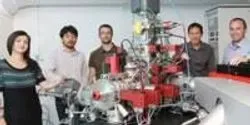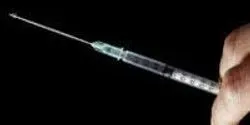Health Science

In Human Clinical Trial, UAB to Test Drug Shown to Completely Reverse Diabetes in Human Islets, Mice
New research conducted at the University of Alabama at Birmingham has shown that the common blood pressure drug verapamil completely reverses diabetes in animal models. Now, thanks to a three-year, $2.1 million grant from the JDRF, UAB researchers will begin conducting a potentially groundbreaking clinical trial in 2015 to see if it can do the same in humans.

A novel jelly-like substance developed by Kansas State University researchers was recently issued a U.S. patent. The substance may be used for biomedical applications, ranging from cell culture and drug delivery to repairing and replacing tissue, organs and cartilage.

As children, it was fascinating to put a flashlight up to our palms to see the light shine through the hand. Washington University in St. Louis engineers are using a similar idea to track movement inside the body’s tissues to improve imaging of cancerous tissues and to develop potential treatments.

Can a zombie apocalypse really happen? Hear what advice the experts at the American Chemical Society have to say on surviving the undead.

Scientists at EPFL have used a new imaging technique to monitor how glucose, our main energy source, is used in the body. Their findings may have great implications for diseases like diabetes.

Drawing blood and testing it is standard practice for many medical diagnostics. As a less painful alternative, scientists are developing skin patches that could one day replace the syringe. In the American Chemical Society journal Analytical Chemistry, one team reports they have designed and successfully tested, for the first time, a small skin patch that detected malaria proteins in live mice. It could someday be adapted for use in humans to diagnose other diseases, too.















